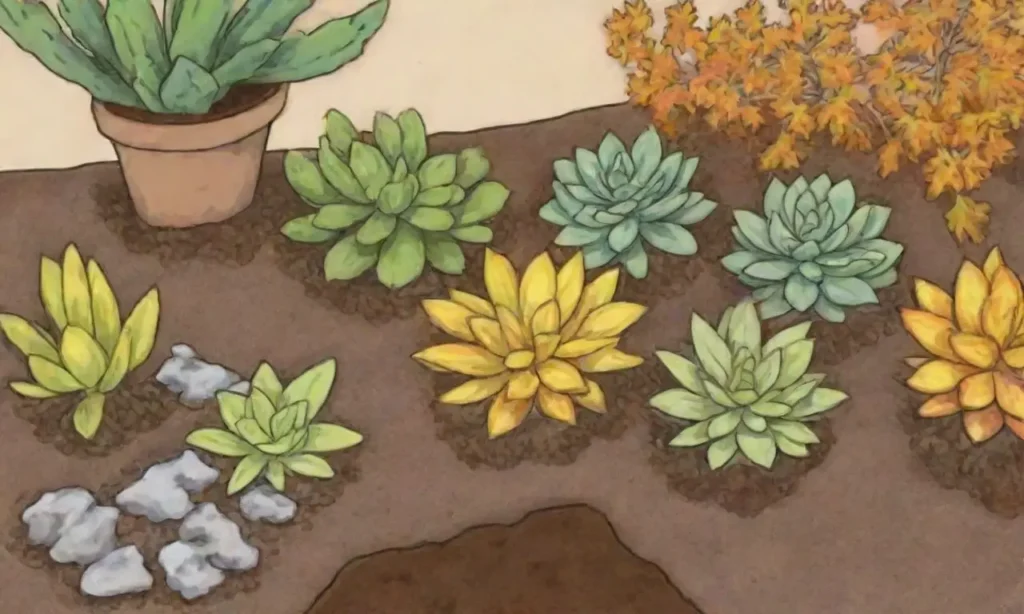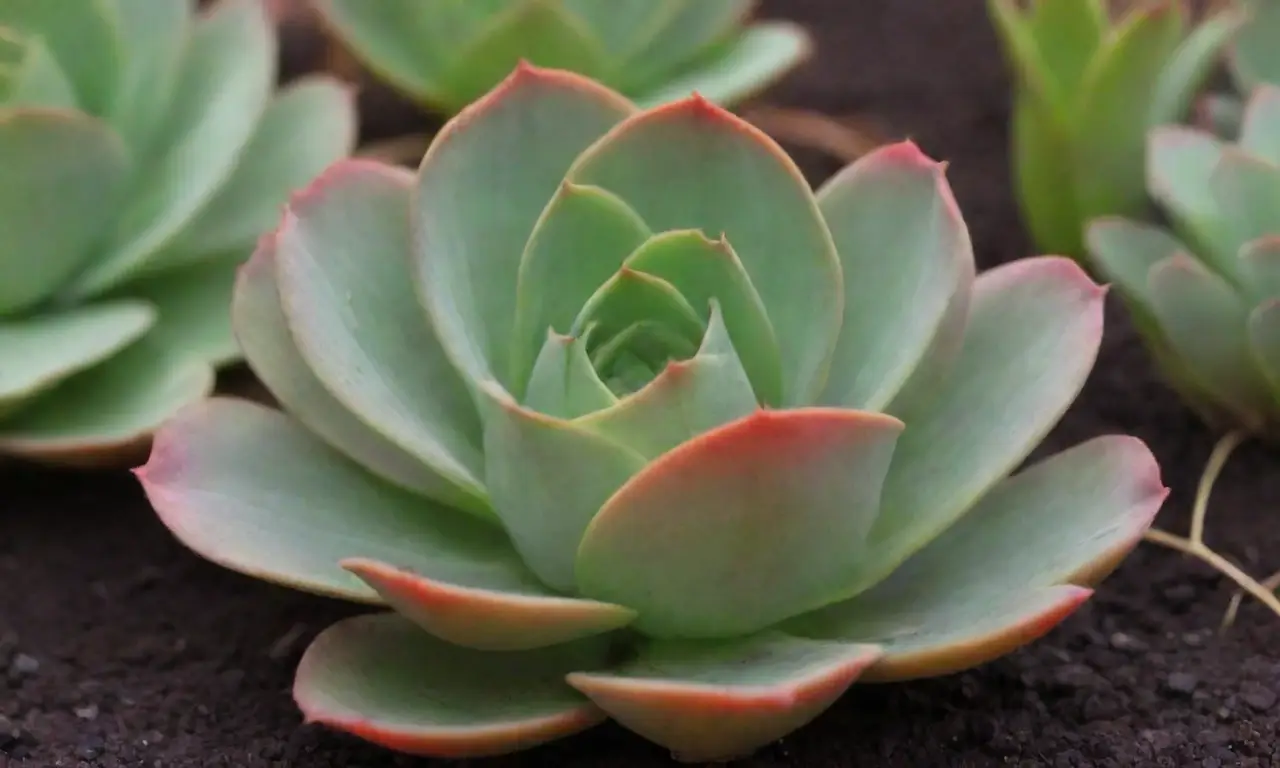
Recognizing the Signs of Overwatered Succulents in Your Garden

Introduction
Succulents, known for their hardiness and minimal care requirements, have become popular choices for indoor and outdoor gardens alike. Their ability to thrive in arid conditions might lead some gardeners to believe that all they need is a little water and sunlight. However, too much of a good thing can quickly lead to complications. Overwatering is one of the leading causes of succulent decline, and recognizing the signs early can save your plants from irreversible damage.
In this article, we will explore the various indicators that suggest your succulents may be suffering from overwatering. We will delve into the biological responses of succulents to excess moisture, examine the symptoms to look out for, and offer practical solutions to remedy the situation. Whether you are a novice gardener or a seasoned succulent enthusiast, these insights can help you ensure your plants flourish in their environment.
Understanding Succulents and Their Water Needs
Succulents are fascinating plants that have adapted to store water in their leaves, stems, and roots, enabling them to survive in arid environments. This unique ability is a result of their specialized tissues, often making them resistant to drought conditions. However, this same resilience can lead to complications when it comes to watering practices.
The water needs of succulents vary significantly depending on various factors, including envionmental conditions such as temperature, humidity, and the time of year. Generally, succulents prefer a well-draining medium, which allows for quick evaporation. Watering them too frequently can interfere with their natural processes, leading to waterlogged soil and ultimately, rot and decay.
In addition to environmental factors, it's essential to consider the specific type of succulent being cultivated. Different species possess different water retention capacities. For instance, Echeveria varieties might require a different watering schedule than Aloe Vera, even though both belong to the same succulent family. Understanding these unique needs is crucial for effective care and helps prevent overwatering situations from arising.
Common Signs of Overwatered Succulents
1. Yellowing Leaves
One of the most significant indicators of overwatered succulents is the yellowing of the leaves. When a succulent receives too much moisture, it can no longer absorb the excess water, causing the cells within the leaves to swell and eventually burst. This swelling disrupts the plant's internal processes, leading to nutrient deficiencies and the characteristic yellowing of the leaves.
It's essential to monitor for this symptom actively. In affected plants, the lower leaves usually exhibit yellowing first while the upper leaves may remain green for a while. As the condition worsens, these yellow leaves will eventually become soft and mushy, making it crucial to act promptly to address the issue.
 What Your Succulents Are Telling You: Signs of Overwatering
What Your Succulents Are Telling You: Signs of OverwateringIf you notice your succulent's leaves taking on a yellow hue, check the soil moisture immediately. Stick your finger into the soil—if it feels damp or wet several inches down, your succulent is likely experiencing overwatering stress. Prompt action is necessary to save the plant, which may include reducing the frequency of watering or repotting into a more suitable medium.
2. Wilting and Soft Leaves
Another common symptom of overwatered succulents is wilting or noticeably soft leaves. The inability of the plant to uptake nutrients due to excessive moisture can lead to cells losing structural integrity. When this occurs, the leaves may begin to droop or become squishy and waterlogged.
This wilting is often misleading; gardeners may mistakenly interpret it as a sign of dehydration. However, it's vital to recognize that in succulent plants, wilting can be a result of over-saturation. Overhydrated cactus and succulent leaves can take on a translucent appearance, losing their plumpness and firmness that are often characteristics of healthy succulents.
It's worth noting that not all soft leaves indicate overwatering; environmental factors such as extreme heat or insufficient light can also cause them to wilt. Thus, observing a combination of symptoms such as yellowing leaves alongside wilting will offer a clearer picture of what your succulent is experiencing.
3. Root Rot
One of the gravest issues associated with overwatering succulents is root rot. This condition occurs when roots become waterlogged, making them vulnerable to pathogens and decomposers, which thrive in wet conditions. As rotting progresses, the roots will start to decay, leading to further complications such as a failure to transport water and nutrients.
Root rot can often be discovered through signs on the surface, such as wilting leaves or a sudden decline in the plant's overall health. To diagnose root rot, gardeners should avoid any guessing games and perform a careful inspection. Gently remove the plant from its pot and examine the roots. Healthy roots will appear firm and white, while affected roots may appear black, brown, and mushy.
If root rot is detected, quick intervention is necessary. This may include pruning away the affected root sections and repotting the succulent in fresh, dry soil. It's essential to ensure that the new container has proper drainage holes to avoid similar issues moving forward.
 How to Tell If Your Succulents Have Had Too Much Watering
How to Tell If Your Succulents Have Had Too Much WateringBest Practices for Watering Succulents

1. Understanding Soil Moisture
One of the paramount practices in caring for succulents is learning to understand their soil moisture needs. Instead of adhering to a strict watering schedule, focus on assessing moisture levels in the soil regularly. The top inch or two of soil should dry out completely between waterings, allowing the roots to breathe.
Using a moisture meter can be beneficial, especially for those new to succulent care. By inserting the meter into the soil, you can accurately gauge moisture levels and avoid guessing games. Traditional methods include inserting a finger into the soil; if the soil feels dry at a depth of about one inch or more, it’s time to water.
To water effectively, use the soak and dry method; this involves watering the plant thoroughly until water drains out of the bottom. However, ensure you discard any excess water collected in the saucer to mitigate water-logging, ensuring roots have the chance to absorb moisture and then dry out during the period between watering sessions.
2. Choosing the Right Pot and Soil
Another critical factor in preventing overwatering is selecting the appropriate pots and soil for your succulents. Opt for containers that facilitate drainage, such as those made of terracotta or ceramic, which allow for airflow to the roots. Make sure that all containers have drainage holes—this feature is non-negotiable, as it helps prevent water accumulation at the bottom of the pot.
Besides the pot, the soil composition is equally important. Standard potting soil often retains too much moisture for succulents, leading to potential overwatering. Instead, seek out specially formulated succulent or cactus soil, which tends to be more porous, promoting drainage and oxygen flow. You can also create your own mix using components like perlite, pumice, and coarse sand to ensure proper drainage for your plants.
3. Adjusting Care Based on Season and Environment
Lastly, adjust your watering routine based on the seasonal changes and environmental conditions surrounding your succulents. During the growth period in spring and summer, succulents generally require more water as they actively photosynthesize and grow. In contrast, during fall and winter, many succulents enter a dormant phase, requiring significantly less moisture.
 Are Your Succulents Weeping? Signs of Overwatering Explained
Are Your Succulents Weeping? Signs of Overwatering ExplainedEnvironmental conditions such as heat, sunlight exposure, and humidity should also dictate your watering approach. A succulent exposed to bright sunlight and high temperatures may necessitate more frequent watering than one in a shaded, humid environment. Periodically evaluating and adjusting your care routine will help maintain optimal moisture levels, reducing the risk of overwatering.
Conclusion
In conclusion, recognizing the signs of overwatered succulents is crucial for maintaining a healthy garden. By learning to identify symptoms such as yellowing and wilting leaves or root rot, you can take prompt action to save your beloved plants. Understanding the water needs of different succulent species, combined with the implementation of effective care practices, will significantly reduce the risk of overwatering and contribute to your garden’s overall success.
In addition to careful observation and practice, remember that every gardener learns through experience. Embrace the journey of caring for succulents and consider any setbacks as a learning opportunity. With the right knowledge and approach, you can cultivate a thriving garden of beautiful succulents, reflecting your dedication and passion for these remarkable plants.
Ultimately, being mindful of your plants' needs, understanding their signs, and adapting your care regime can lead to a flourishing succulent collection that brings joy and satisfaction for years to come. So, roll up your sleeves, get to planting, and may your garden flourish under your attentive watch!
If you want to read more articles similar to Recognizing the Signs of Overwatered Succulents in Your Garden, you can visit the Signs of overwatering category.






You Must Read